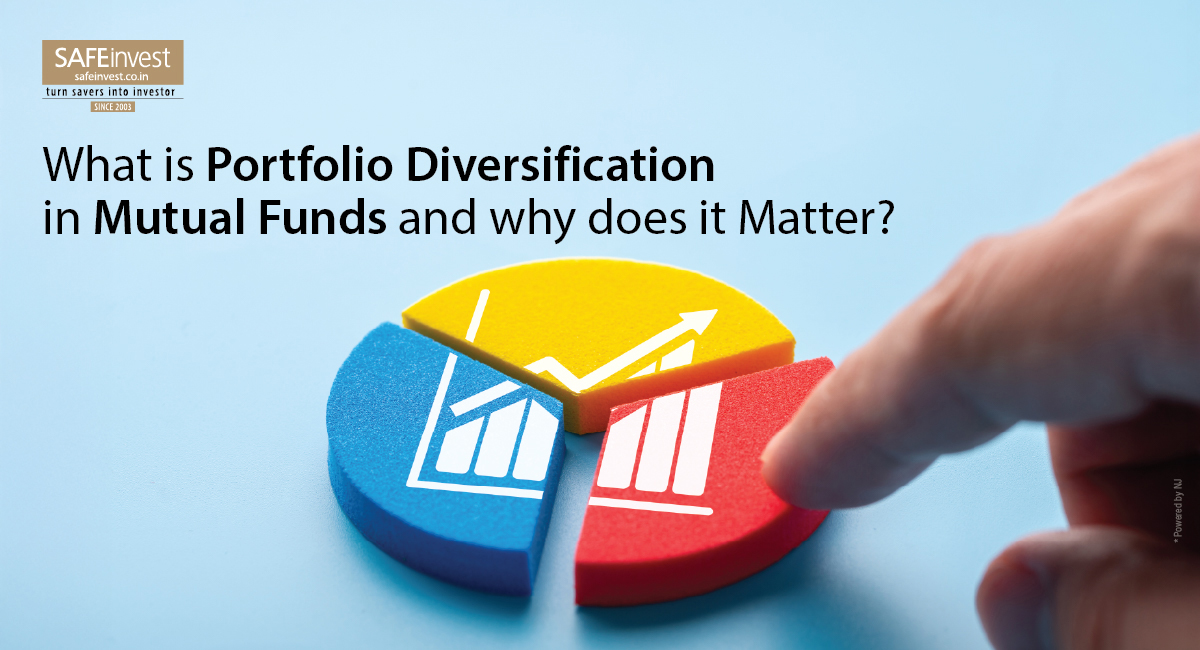What Is Portfolio Diversification in Mutual Funds and Why Does It Matter?

What Is Portfolio Diversification?
One of the first things financial experts tell investors is, “Don’t put all your eggs in one basket.” This simple advice sums up the concept of portfolio diversification. It is a strategy used to manage risk in your investing journey. But what is Mutual Fund diversification, and why is it so vital in mutual fund investment?
Portfolio diversification means spreading your investments across different asset classes and securities to reduce risk. The aim is to ensure that poor performance in a particular sector doesn’t impact your overall returns. Diversification in a mutual fund involves investing in a multitude of companies across various asset classes. Essentially, a single fund distributes investments widely, thereby cushioning the impact of fluctuations in any specific area.
Portfolio Diversification - A team, Not A Solo Player
Imagine your investment portfolio as a sports team. If your entire team was made of star strikers, who would defend the goal? Similarly, a portfolio made up of only high-risk, high-rewarding investments which may perform great on good days but collapse on bad ones.
Diversification builds a balanced team. You have some players (investments) who can score big, some who defend against losses, and others who deliver steady performance throughout the game. Together they help your team to win more consistently over time of even if one player has an off day.
That’s the real power of mutual fund portfolio diversification. It’s not about holding a bunch of investments but holding the right mix of securities during the market’s ups and downs, and to move forward towards your financial needs.
Why Diversification Is Important?
Diversifying your investments is the most important thing you can do to protect yourself from unwanted losses.
- Reduces Risk: Portfolio diversification in mutual funds helps to protect your investments from market volatility. If one category from your invested portfolio performs poorly, other assets present in your portfolio may perform well, reducing potential losses.
- Balanced Returns: Different asset classes and sectors perform differently in different market cycles. A well-diversified portfolio tends to deliver more stable, long-term returns by not relying too heavily on a single asset’s performance.
- Maximises Growth Opportunities: A multi-cap fund strategically reallocates investments among small, mid, and large-cap stocks to capture market-wide potential, ensuring investors are positioned to maximize growth by diversifying their portfolio and capitalizing on growth opportunities.
- Reduces Emotional Instability: A diversified portfolio, being less volatile, results in creating less or no panic among investors during the market’s downturns. This encourages long-term discipline.
Double-Edged Sword Of Diversification: Is It Still Worth It?
Diversification is a widely accepted investment principle, but it’s important to understand that it comes with both strengths and weaknesses. Still, when managed wisely, the benefits often outweigh the risks.
- Balancing Investment Gains and Security: It may lead to diluted returns, as your high-performing assets could result in lower value due to the underperforming classes. However, this trade-off helps you to maintain long-term stability & reduces volatility.
- Overcoming Complexity with Tools and Expertise. Managing a diverse portfolio can be time-consuming and complex, but when the right tools and an expert relationship manager come into play, this complexity turns into a well-balanced growth strategy.
- Strategic Diversification: There’s a risk of overdiversification, where too many assets may result in little added value. Yet, when done strategically, each asset can play a role in balancing the risk-return profile.
Final Thoughts
Diversification isn’t about chasing the highest return, it’s about building a resilient portfolio that can weather different market conditions. The key lies in smart allocation, not simply spreading investments everywhere. In that light, its advantages shine brighter than its limitations. Mutual Fund Portfolio diversification is one of the smartest ways to handle investment risk. They make it easier to diversify across sectors & companies, helping you reduce risk and aim for steady, long-term returns.
In the end, diversification isn’t just a strategy - it’s a mindset. It reflects a thoughtful approach to investing, one that values stability, resilience, and long-term success. So, as you move forward in your investment journey, remember that a well-diversified mutual fund portfolio is your ally in building wealth with confidence and clarity.
Mutual fund investments are subject to market risks. Read all the scheme related documents carefully.
